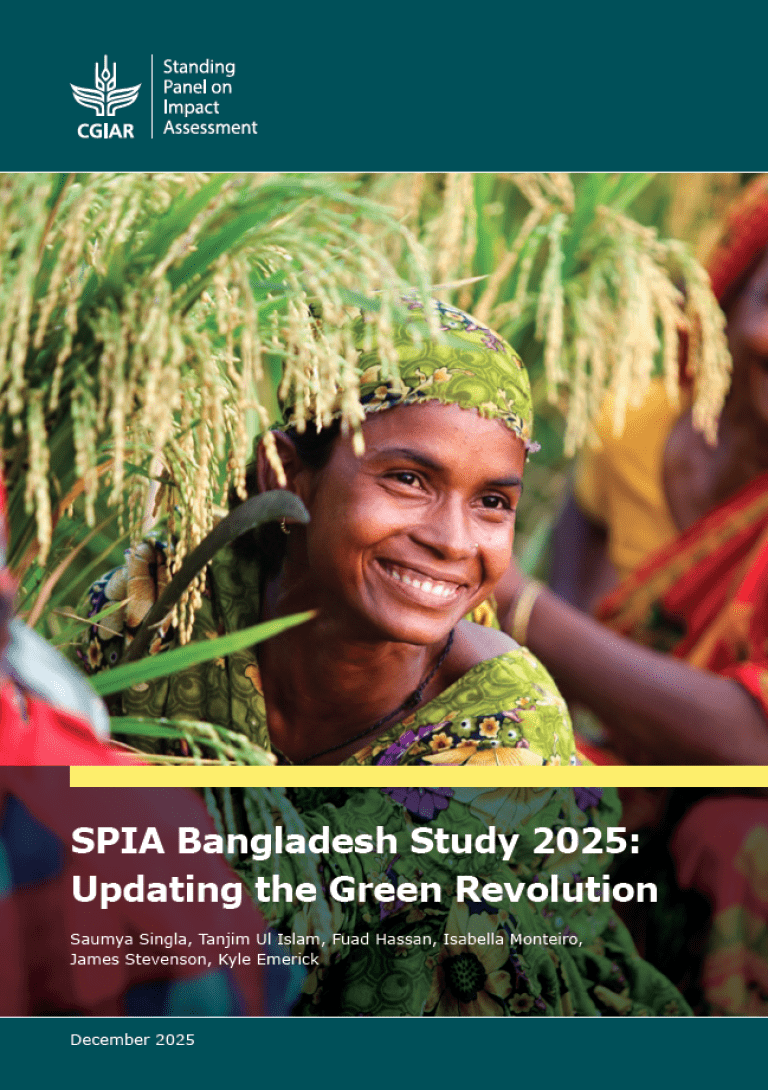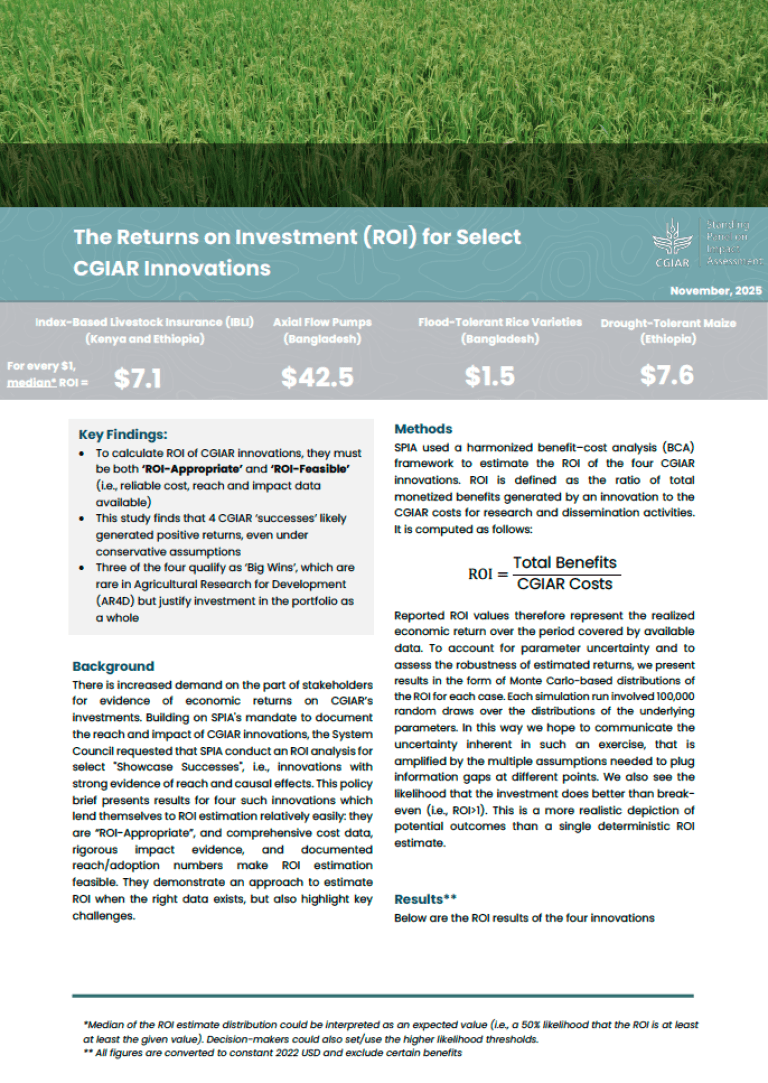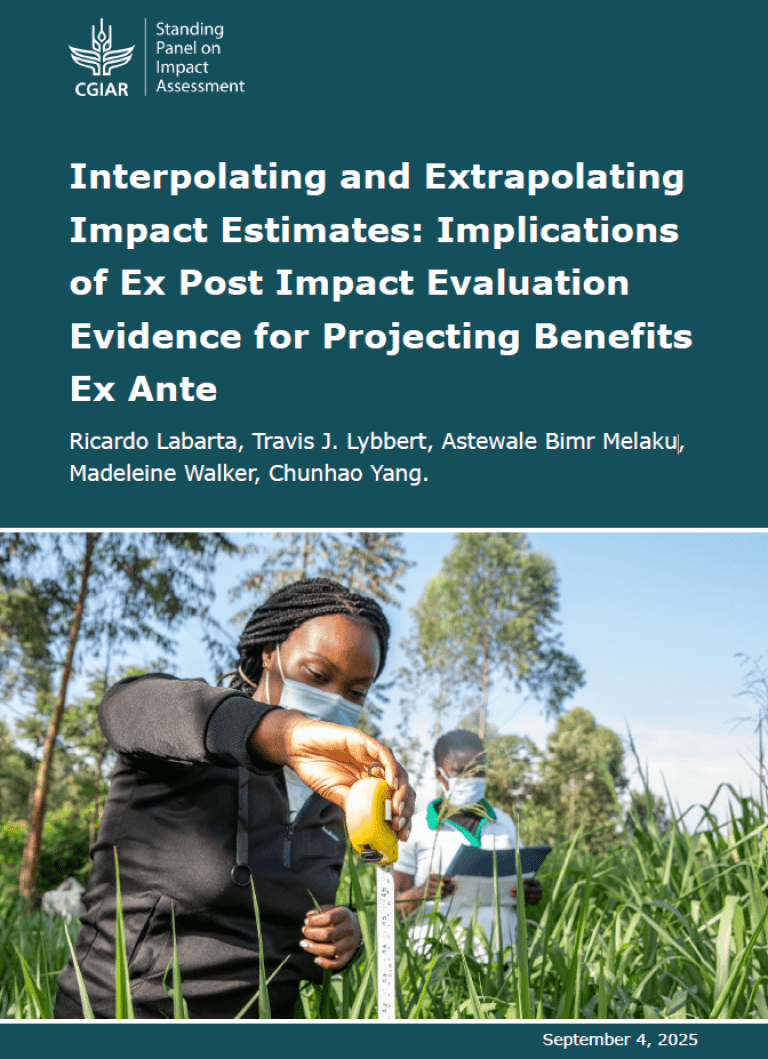Abstract
Impact—the extent to which a specific innovation causally affects a target outcome—is an ideal measure of a program’s success. However, impact evaluations are time- and resource-intensive, making them unavailable in many circumstances. By contrast, measuring the reach of an innovation, i.e., the number of adopters, is more straightforward. As a result, measures of reach are more prevalent than causal impact estimates.
This note discusses the relationship between reach and impact. It is motivated by the mandate of the Standing Panel on Impact Assessment (SPIA) of the CGIAR and draws on SPIA country studies, which explicitly focus on measuring the reach of CGIAR innovations, to illustrate the possibilities and pitfalls of using reach to infer impact.
Whereas the reach of an innovation in a given population may reveal something about its impact, the conditions under which reach may be a useful proxy for impact often deviate sharply from on-the-ground realities. In most settings, understanding the total benefits of an innovation requires reliable evidence of both reach and impact.
Citation
Brooks, M., Lybbert, T.J., & Walker, M. (2025). Does an Innovation’s Reach Reveal Anything About its Impact? Under the Right Conditions: Possibly. Technical Note N.12. Rome. SPIA.
Author(s)
Brooks, M., Lybbert, T.J., & Walker, M.





